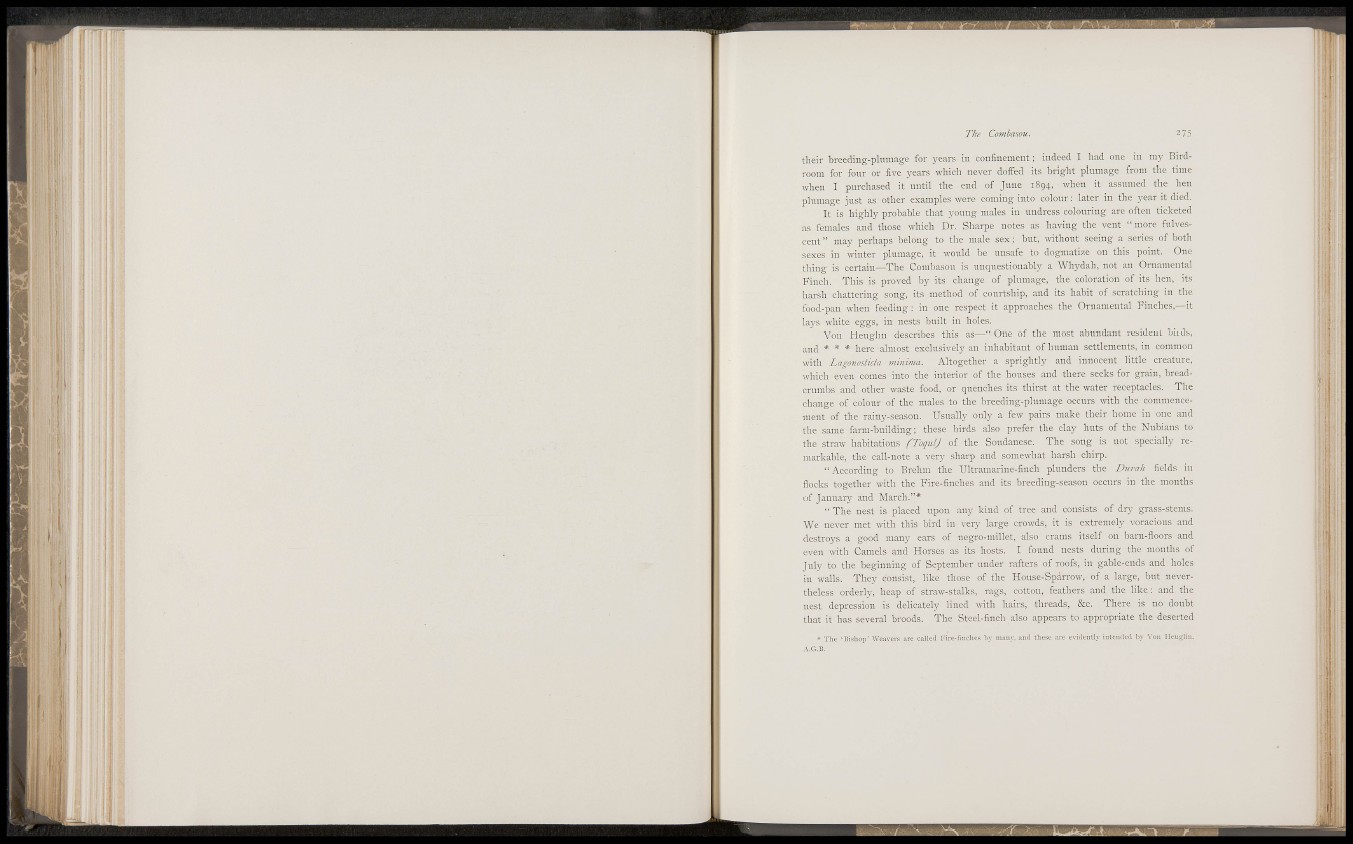
• s
t v
.
1-1 1,
I
T T
; ii
i'I 1V
i
i.i!
The Covibasou. 2 75
their breeding-plumage for years in confinement ; indeed I had one in 1113' Birdroom
for four or five years which never doffed its bright plnmage from the time
when I purchased it until the end of June 1894, when it assumed the hen
plumage just as other examples were coming into colour: later in the year it died.
It is highly probable that young males in undress colouring are often ticketed
as females and those which Dr. Sharpe notes as having the vent "more fulvescent"
may perhaps belong to the male sex; but, without seeing a series of both
sexes in winter plumage, it would be unsafe to dogmatize on this point. One
thing is certain—The Combasou is uncjuestionably a Whydah, not an Ornamental
Finch. This is proved by its change of plumage, the coloration of its hen, its
harsh chattering song, its method of courtship, and its habit of scratching in the
food-pan when feeding : in one respect it approaches the Ornamental Finches,—it
lays white eggs, in nests built in holes.
Von Heuglin describes this as—" One of the most abundant resident birds,
and * * '* here almost exclusively an inhabitant of human settlements, in common
with Lagonosticta minima. Altogether a sprightly and innocent little creature,
^vhich even comes into the interior of the houses and there seeks for grain, breadcrumbs
and other waste food, or quenches its thirst at the water receptacles. The
change of colour of the males to the breeding-plumage occurs with the commencement
of the rainy-season. Usually only a few pairs make their home in one and
the same farm-building; these birds also prefer the clay huts of the Nubians to
the straw habitations (ToqiilJ of the Soudanese. The song is not specially remarkable,
the call-note a verv sharp and somewhat harsh chirp.
"According to Brehm the Ultramarine-finch plunders the Durah fields in
flocks together with the Fire-finches and its breeding-season occurs in the months
of January and March."*
" The nest is placed upon any kind of tree and consists of dry grass-stems.
We never met with this bird in very large crowds, it is extremely voracious and
destroys a good many ears of negro-millet, also crams itself on bam-fioors and
even \\dth Camels and Horses as its hosts. I found nests during the months of
July to the beginning of September under rafters of roofs, in gable-ends and holes
in walls. They consist, like those of the House-Sparrow, of a large, but nevertheless
orderly, heap of straw-stalks, rags, cotton, feathers and the like : and the
nest depression is delicately lined ^vith hairs, threads, &c. There is no doubt
that it has several broods. The Steel-finch also appears to appropriate the deserted
* Tlie 'Bisliop' We.ivere are c.illed I'lre-fniches by iiiaii.w and these arc evidently intended by Von Heuglin.
MM
¡!: I
I :
ii!
i r ;
I' (
; I